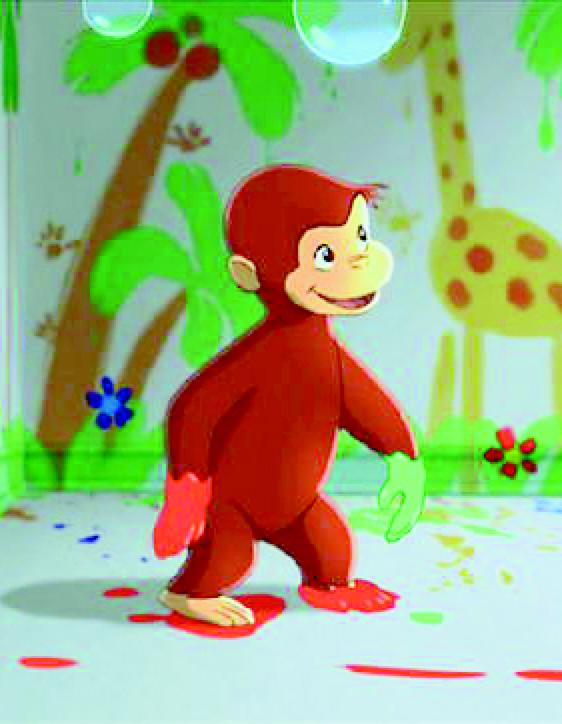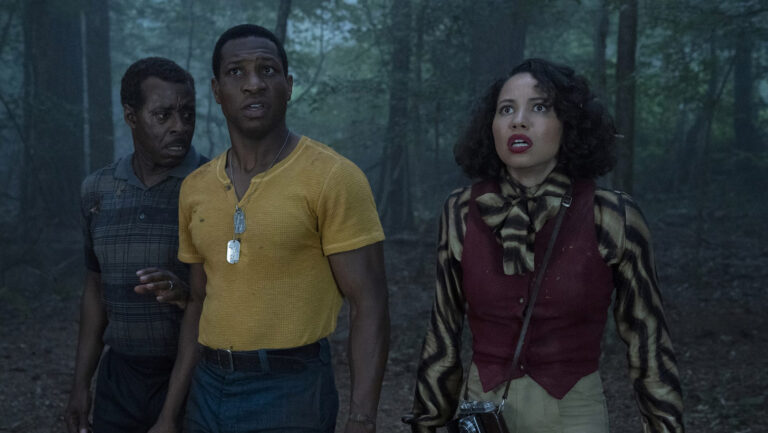To be fair, the film treats the Reys' preschool classic with a certain amount of respect. For starters, the film is animated in a (more or less) traditional 2-D animation style that tries vaguely to replicate H.A.'s original illustrations. At least producers avoided the shock and horror of a Scooby-Doo-like or Garfield-esque combination of live action and CGI effects. The film does occasionally jazz up its animation with some 3-D cel shading and a couple of fancy, fully rendered, computer-animated action sequences–but, for the most part, the animation is the real deal. H.A.'s simple, crayon-scrawl style is updated a bit for today's post-anime youth, but his whimsical, bulbous buildings and lanky characters are still recognizable under the film's high-tech spit-shine. (Not to mention all the product placements for Dole and Volkswagen. I'm sure the Reys, who fled the Nazis in 1940 Paris clutching the original manuscript to Curious George, would be extremely happy to see that.)
Narratively, the film takes more than a few liberties. The original books, if you can cast your mind back that far, are short on story and long on hijinks. As in the original story, Curious George is a happy, trouble-loving monkey discovered in the jungles of Africa by the mysterious Man in the Yellow Hat (here voiced by Will Ferrell and rechristened “Ted”). The film's script (credited and uncredited to no less than 10 people!) throws in an assortment of plot elements that were obviously deemed necessary by studio accountants. Ted is brought to the jungle on an Indiana Jones-style quest for a lost idol. There's an added love interest in the form of a doe-eyed schoolteacher (Drew Barrymore–who, in animated form, finally exceeds her tolerable level of cuteness). There's even a villain (David Cross, a talented comedian who just doesn't belong in G-rated films), who's scheming to turn the museum Ted works for into a parking lot.
Although these plot elements are intended to lend the Curious George tale a little narrative flow, they feel distracting and tacked on. When George is simply getting into mischief (dumping cans of paint into a bathtub or floating over the city on some stolen balloons), Curious George is delightful. George is one damn cute little monkey, and his cheeky but harmless curiosity is what has endeared him to readers for the last 60-odd years. Why mess with perfection? We don't need to see the suddenly brainy George “invent” something to save the museum from the horrors of urban sprawl.
In addition to the adult-savvy voicecast (Ferrell, Barrymore, Cross and … Dick Van Dyke?), acoustic-hip singer/songwriter Jack Johnson has contributed a number of songs to the film. Though not exactly a musical, the film does feature the songs prominently in its soundtrack. The usefulness of Johnson's contribution will depend largely on your taste for his music. I've never been a big fan, but the insanely happy songs do seem to fit the film's mood to a T and might actually merit a second listen.
I'm sure the filmmakers behind Curious George felt they were doing a great service to mankind, introducing Curious George to a whole new generation. The film is occasionally faithful to its source material, it does keep up the same genial, G-rated spirit, and it's certainly not detrimental to anyone who watches it. But, if you really want to introduce Curious George to a whole new generation, all you have to do is what people have done for the past six or seven generations–buy the original book and read it to your kids.



